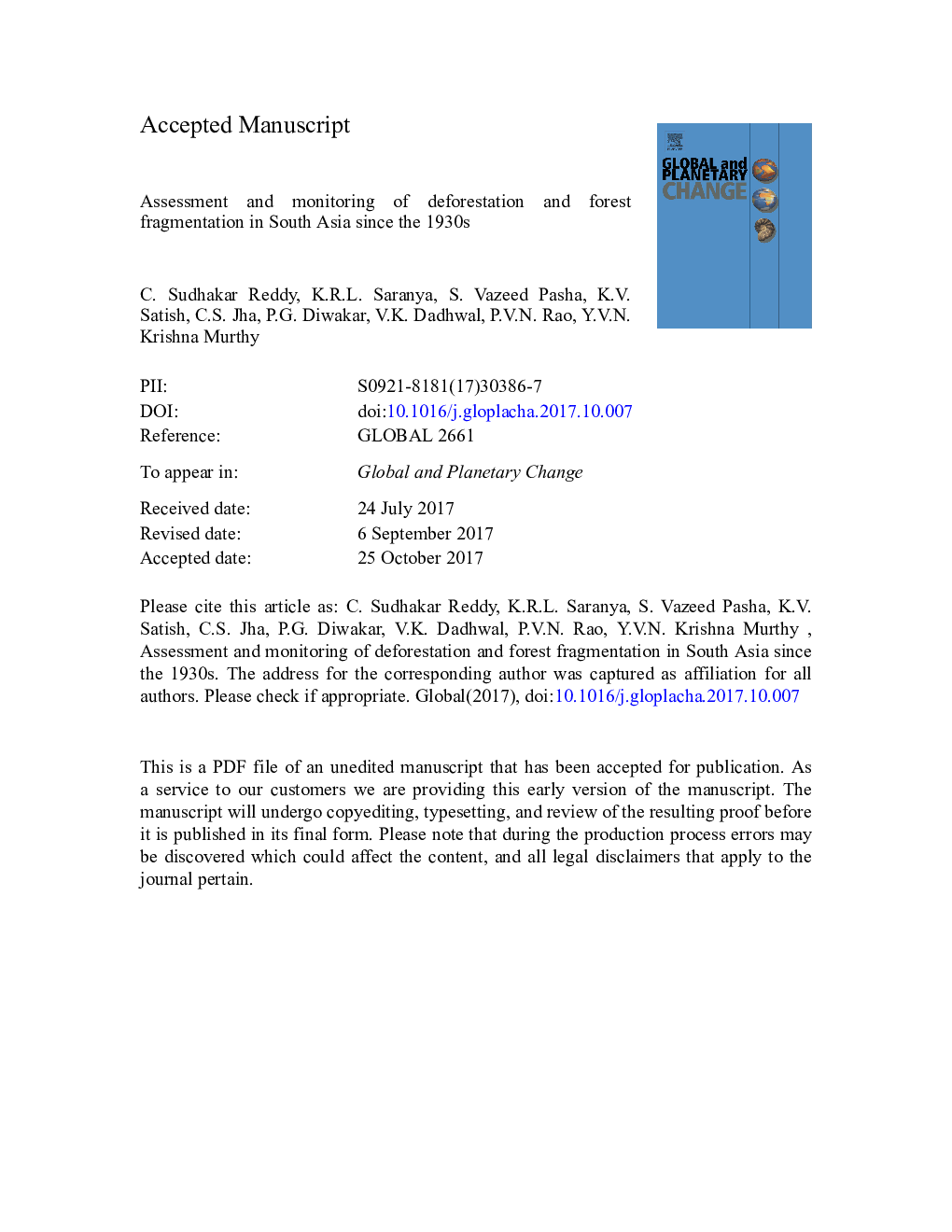| کد مقاله | کد نشریه | سال انتشار | مقاله انگلیسی | نسخه تمام متن |
|---|---|---|---|---|
| 8867619 | 1621621 | 2018 | 42 صفحه PDF | دانلود رایگان |
عنوان انگلیسی مقاله ISI
Assessment and monitoring of deforestation and forest fragmentation in South Asia since the 1930s
ترجمه فارسی عنوان
ارزیابی و نظارت بر جنگل زدایی و تکه شدن جنگل در جنوب آسیا از دهه 1930
دانلود مقاله + سفارش ترجمه
دانلود مقاله ISI انگلیسی
رایگان برای ایرانیان
کلمات کلیدی
پوشش زمین، تنوع زیستی، حفاظت، مشاهده زمین، آسیای جنوبی،
موضوعات مرتبط
مهندسی و علوم پایه
علوم زمین و سیارات
فرآیندهای سطح زمین
چکیده انگلیسی
The present study, first of its kind, has analyzed the land cover and investigated the spatial patterns of deforestation and forest fragmentation in South Asian region since the 1930's. This region comprises of eight countries: India, Bangladesh, Bhutan, Nepal, Pakistan, Afghanistan, Sri Lanka and Maldives. In South Asia, agricultural land is predominant constituting 43% of the total geographical area followed by barren land (19.99%) and forests (14.72%). The long-term change analysis using the classified maps of 1930 and 2014 indicated a loss of 29.62% of the forest cover. Higher annual net deforestation rates were observed in the period from 1930-1975 (0.68%) followed by 1975-1985 (0.23%), 1985-1995 (0.12%), 1995-2005 (0.06%) and 2005-2014 (0.04%) for the region. Forest fragmentation had significant spatio-temporal variation across the South Asian countries. In 1930, 88.91% of the South Asian forest was classified as large core forest, 8.18% as edge forest and 1.18% as perforated forest. The large core forest category has decreased significantly in area over last eight decades. The results of the present study are expected to serve as a reference for the evaluation of globally agreed Aichi biodiversity target 5 for South Asian countries. This study will be a valuable basis for developing management strategies and restoration programs as it tracks the spatial changes in deforestation and forest fragmentation.
ناشر
Database: Elsevier - ScienceDirect (ساینس دایرکت)
Journal: Global and Planetary Change - Volume 161, February 2018, Pages 132-148
Journal: Global and Planetary Change - Volume 161, February 2018, Pages 132-148
نویسندگان
C. Sudhakar Reddy, K.R.L. Saranya, S. Vazeed Pasha, K.V. Satish, C.S. Jha, P.G. Diwakar, V.K. Dadhwal, P.V.N. Rao, Y.V.N. Krishna Murthy,
